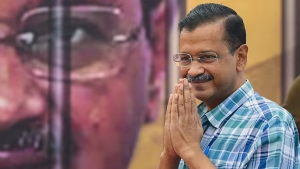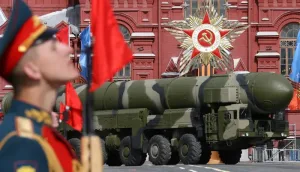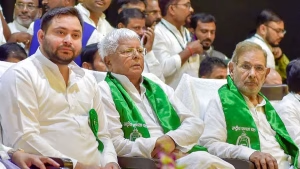India’s 2024 Lok Sabha elections have proven to be a spectacular showcase of democratic vibrancy, producing outcomes that have defied expectations and altered the political tapestry of the nation. Following a rigorous six-week-long voting process involving a staggering 640 million votes, the final tallies are bringing to light the unpredicted political currents sweeping through the world’s largest democracy.
The Bharatiya Janata Party (BJP), led by Prime Minister Narendra Modi, while maintaining a formidable presence, fell short of an outright majority on its own, securing 240 seats. This marks a significant drop from the 303 seats it claimed in the 2019 elections. Despite this, with the support of its allies within the National Democratic Alliance (NDA), the BJP has managed to scrape together a majority. On the other side, the opposition INDIA alliance, spearheaded by the Indian National Congress, made impressive gains, securing 222 seats and illustrating a resurgent opposition force.
This year’s election results starkly contrast with the 2019 outcomes, indicating a shift in voter sentiment and political alliances’ effectiveness. One of the most riveting narratives of this election has been the intense electoral battles and surprising shifts in key states like Uttar Pradesh (UP) and Maharashtra.
Uttar Pradesh: The Crucible of Change
Uttar Pradesh, often seen as a bellwether state due to its significant electoral weight of 80 seats, witnessed a dramatic turnaround. The Samajwadi Party (SP), in alliance with the Congress, captured 37 seats, a substantial increase from their previous tally. The Congress also improved its standing by winning six seats. Political analysts, including Hindi professor Apoorvanand, attribute this surge to the SP’s expanded outreach to marginalized communities and a palpable disillusionment with the BJP among the youth. “The young voters are expressing their discontent with the BJP, questioning the benefit of ideological pursuits like the Hindu nation utopia when basic dignities and employment are in jeopardy,” Apoorvanand explained to Al Jazeera.
Perhaps the most symbolic loss for the BJP was in the Faizabad constituency, home to the newly consecrated Ram temple in Ayodhya. The temple, a cornerstone of the BJP’s campaign narratives, could not secure the party’s win in the region, reflecting complex voter dynamics and possibly a shift in priority from religious to economic and social issues.
Maharashtra: BJP’s Unexpected Setback
Another significant storyline unfolded in Maharashtra, where the BJP faced unexpected challenges, indicating a possible erosion of its earlier dominant position. This has opened discussions on the shifting political allegiances and the impact of local issues and governance on voter decisions.
The Road Ahead
As the dust settles on these elections, the results highlight a diversifying Indian political landscape where regional dynamics and younger voters are playing increasingly pivotal roles. The outcomes from UP and Maharashtra, in particular, suggest a move towards more issue-based voting, transcending traditional party lines and ideological confines.
India’s 2024 elections have not only reshaped the parliamentary configuration but have also set the stage for a nuanced and potentially transformative era in Indian politics, where the voices of the marginalized and the youth are proving crucial in dictating the rhythms of power shifts. As the new government prepares to take office, all eyes will be on how it addresses the manifold challenges and expectations that have been clearly voiced by the electorate.














